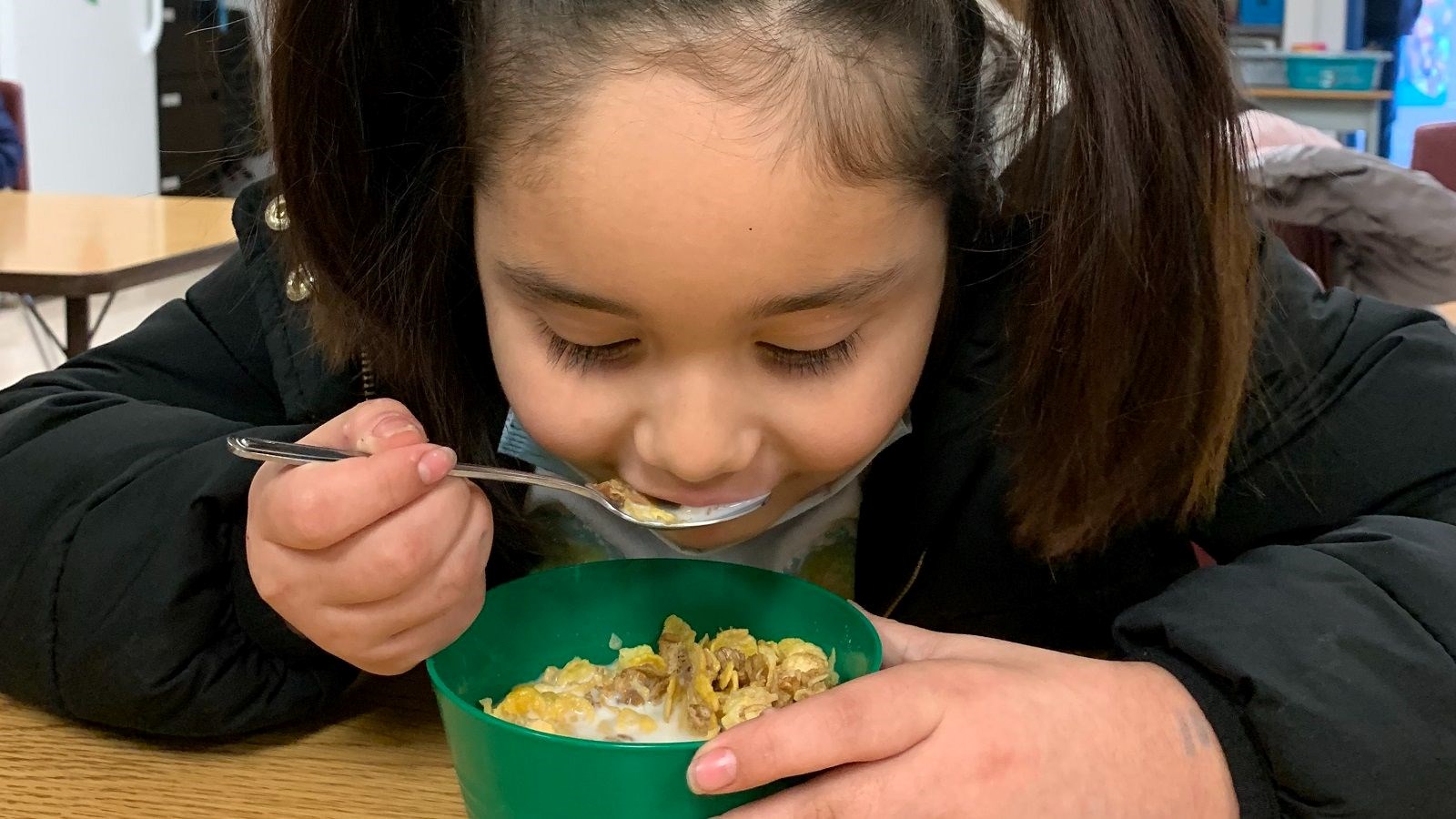District meal programs nurture learning through nutrition
It’s not easy feeding 1,900 students at 40 different school sites, but it’s something Food and Nutrition Services staff in the district’s breakfast and lunch programs do for vulnerable children and youth every single day.
The district’s meal programs are an integral part of the lives of our students, providing nutritious food to help them focus in class and achieve their full potential. In a district the size of Surrey’s, to dish out so many meals requires the coordinated work of numerous program aides, food service supervisors, teacher chefs, caterers and principals who are committed to ensuring no child goes hungry at school.
“This year, we are feeding about 500 students for breakfast every morning,” said Julie Stephenson, Manager of Food and Nutrition Services with the district, who oversees the department’s breakfast and lunch programs. “For lunch, we feed about 1,600 elementary and 365 secondary students every day. That is a big group of people and a lot of moving parts.”

In addition to the district’s meal programs at 40 school sites, more than 20 schools run breakfast programs at a school level, highlighting the need for nutritious meals first thing in the morning. In the latest guide for Nutrition Month by Dietitians of Canada (Page 7), Stephenson recently shared her knowledge around working with children as a registered dietitian, touching on the importance of a full stomach on concentration in class and the challenges, as well as strategies, of helping students to eat healthily.
“Research has proven that children need enough good food to learn,” she said. “It’s really important to their learning to let them concentrate and move ahead in their schoolwork rather than focusing on feeling crabby or hungry.”
At the start of the pandemic, the district’s meal programs pivoted to a grab-and-go distribution model, serving more than 100,000 in meals in just three months with the help of the Culinary Assistants, Safe Schools and Community Schools Partnership staff. While not every participating student or family came to pick up meals, Stephenson said she was encouraged to see those students return for food when schools reopened.
“They’re back, and we’re happy to feed them,” she said. “We aim to feed the students who don’t have food that they could bring to eat at school and would otherwise be hungry all day. Unfortunately, there are many children in need in our community.”
The programs take student input into consideration when designing menus, with staff working to make healthier recipes for students’ favourites while working within provincial food and beverage guidelines for schools. For instance, cheese pizza is made with whole grain crust and low-fat cheese, and cookies are engineered to reduce sugar, salt and fat content.
“We’re very interested in what the children are eating and want to eat,” said Stephenson. “We track what we sent to the classroom and what came back. If an entrée receives an unpopular rating, it will either be taken off the menu or fixed.”
Stephenson said staff are also careful to use welcoming language that doesn’t make kids think they won’t be fed, and serve food in a sort of “reverse buffet” to maximize the nutrition offered and allow students to choose from a wider variety of foods.
“When we serve breakfast, we start with the expensive things like protein and fruit because their families may not be able to provide these foods,” she said. “They fill up their plate with scrambled eggs and a few apple slices, maybe a bowl of cereal with milk. We changed the serving order so that students are encouraged to include a protein and fruit choice before they load up on something like toast, which is a starchy food that digests relatively quickly.”
Ultimately, Stephenson credits the work of the meal program aids, many of whom develop positive connections with students and more look forward to seeing them every day.
“The students count on seeing them too,” she said. “They really are an amazing team.”
Our district and school-run meal programs are supported by generous funding from numerous donors. To donate or to learn more about supporting the district’s meal programs, click here.

.png)

